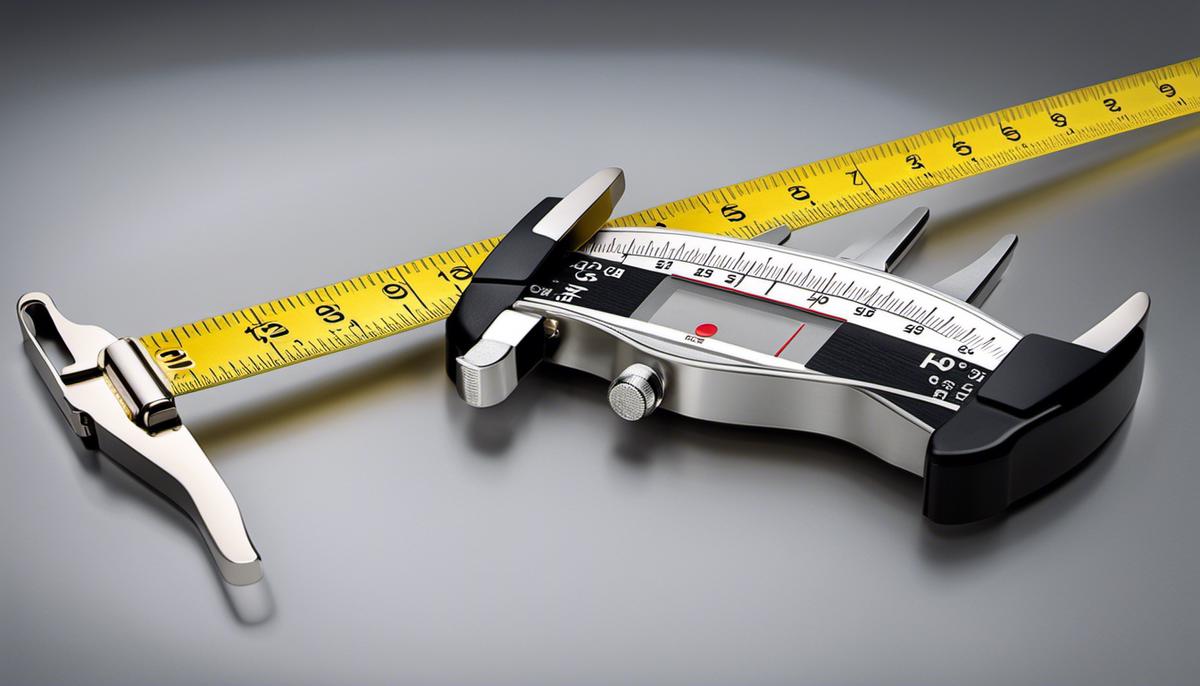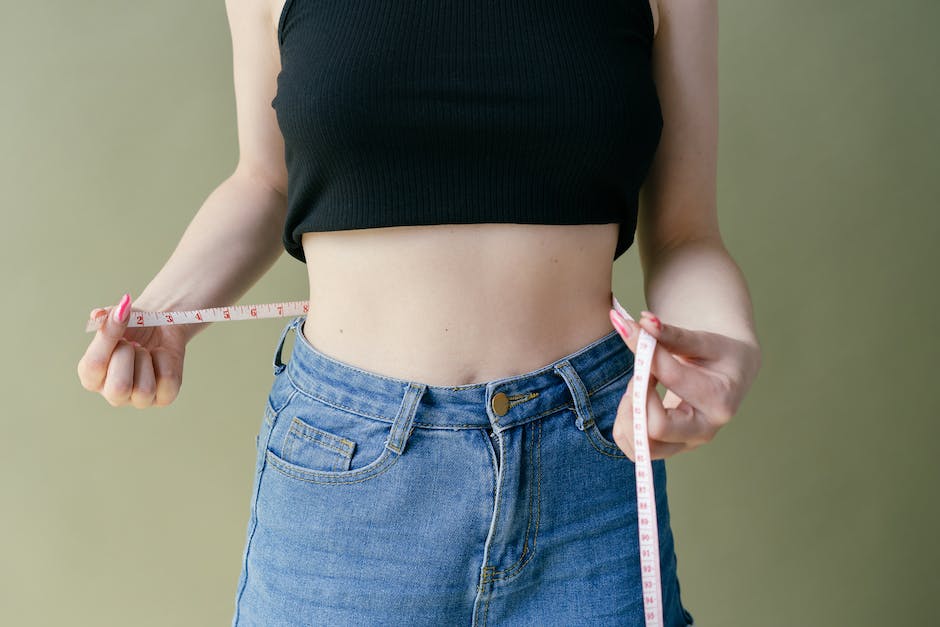In the realm of health and fitness, there’s a lot more to achieving your goals than merely counting steps and watching the scale. Girth measurements, in particular, play a crucial role in providing a more nuanced view of your body’s composition, helping you track your fitness progress in a more detailed and accurate way. This comprehensive guide will delve into the importance of girth measurements, explain the correct procedures for taking them, teach you how to interpret the results accurately, identify common mistakes, and provide a comparison with other popular fitness assessment tools. Irrespective of whether you are already a fitness enthusiast or just beginning your journey toward improving your health, understanding girth measurement can be a valuable ally in your fitness arsenal.
Importance of Girth Measurement
Understanding Girth Measurements in Fitness Assessment
Girth measurements are a principal tool utilized in fitness assessment in order to provide an understanding of body composition, fat distribution, and muscle condition. These measurements, when taken regularly, can track progress over time, offering quantifiable evidence of muscle gain or fat loss.Tracking Progress
When embarking on a fitness journey, one of the key motivators is visible progress. However, visible changes can sometimes take time to notice. This is where girth measurements come in. By accurately measuring specific areas of the body at regular intervals, individuals can see evidence of their progress, even when changes may seem minute or slow-paced visually. Measurements can help provide the encouragement needed to stick with an exercise regimen, or provide necessary data to adjust a fitness plan should progress be stagnant or headed in an undesired direction.
Assessing Body Composition
Beyond simply tracking progress, girth measurements provide an understanding of one’s body composition. Body composition refers to the ratios of fat, muscle, and bone in the body, and can add more depth to the understanding of an individual’s health status than body weight alone. While scales can indicate weight loss or gain, they fail to distinguish whether lost weight came from muscle or fat. Girth measurements provide the necessary additional information to assess whether a fitness program is effectively promoting muscle growth or fat loss.
Determining Body Fat Percentage
Girth measurements can also provide an estimate of a person’s body fat percentage. Body fat is an essential aspect of health; an individual requires a certain amount for basic bodily functions. However, too much can lead to obesity and related health problems. A girth measurement, along with few other variables, can be used to calculate a Body Density Estimate, which is then used to estimate Total Body Fat Percentage. By understanding their body fat percentages, individuals can set realistic and healthy fitness goals.
Girth Measurement Variability
Girth measurements can be taken at several locations on the body, including the waist, hips, thighs, arms, and more. Some of these measurements are used for tracking aesthetic changes, while others contribute more directly to health assessments. For instance, a reduction in waist girth may indicate loss of visceral fat, which is directly associated with a decreased risk of cardiovascular disease and diabetes.
Accuracy and consistency are, however, critical when taking these measures. It is important to measure the same spots each time, and under the same conditions to ensure an accurate understanding of progress and health status.
While girth measurements serve as a valuable tool in assessing one’s fitness level, they aren’t the end-all-be-all. In fact, to comprehensively understand your fitness and health status, it’s recommended to use girth measurements in conjunction with other effective methods such as skinfold measurements or bioelectrical impedance analysis. Consulting with a professional trainer or practitioner is the best way to accurately interpret these metrics, allowing you to get the most out of your fitness journey.

Procedures for Taking Girth Measurements
Essential Tools for Girth Measurement
Accurate girth measurement hinges on the use of the right tools. Typically, you would need a flexible, non-stretchable measuring tape, typically made of plastic, cloth, or fiberglass. This tape wraps around body parts to take accurate measurements. For more minute measurements, a caliper is quite handy. Of course, it’s also important to keep a standardized form on hand to log all your measurements.
Anatomical Areas to Measure
Girth measurements can be taken on multiple body parts, depending on the purpose of the assessment. Standard body parts to measure include the forearm, upper arm, chest, waist, hips, thigh, and calves. Additionally, more specific measurements can be taken from the neck, wrist, ankle, and so on.
Steps to Accurately Measure Girth: Upper Body
To measure the upper arm, the client should be upright with their arms hanging loosely by their sides. Measure at the midpoint between the acromion (the bony prominence on the shoulder) and olecranon processes (the tip of the elbow). For the chest, ask the client to take a deep breath and measure at the fullest part.
Taking Lower Body Measurements
For the waist, the client should stand with their feet close together, ensure the tape is set midway between the tip of the hip bone and the bottom of the ribcage. For the hips, measure around the widest part of the buttocks with the tape parallel to the floor.
Procedures for Thigh and Calf Girth Measurements
For the thigh, measure around the largest girth, which is usually halfway between the hip joint and the knee. To measure the calf, wrap the tape around the thickest part of the calf which is usually the halfway mark between the knee and ankle.
Ensure Consistency on Measurements
To increase reliability between multiple tests, ensure the measurements are taken from the same landmarks on the body every time. The measurements should be taken by the same person each time if possible, to help ensure consistency.
Caution in Taking Measurements
It’s important to note that the tape shouldn’t compress the body part being measured, as this could affect the accuracy of the results. Furthermore, the client’s comfort should be top priority, hence explaining the procedures before starting can help in gaining their consent and cooperation.
The Role of Girth Measurements in Fitness Evaluations
Girth measurements play a substantial role in fitness evaluations as they provide an essential reference for monitoring changes in the client’s physical fitness over time. These measurements aid in constructing a comprehensive profile of a person’s body composition, highlighting areas that may require further attention and improvement. For instance, a reduction in waist girth may suggest a decreased body fat.
By comparing these results to established standards, fitness professionals can assess the individual’s fitness levels relative to their age and gender. This information is invaluable in tailoring fitness and health objectives to meet the unique needs of each individual.

Interpreting Girth Measurement Results
Deciphering Girth Measurements in Fitness Evaluations
In the context of fitness evaluations, girth measurements involve the calculation of the circumference of certain parts of the body. These measurements offer detailed insights into factors such as body fat distribution, muscle mass, and overall body shape. This method represents a practical approach for observing body composition changes over a period of time, be it weight fluctuations, development of muscle, or fat accumulation.
What is considered ‘Healthy’ Girth Measurements?
‘Healthy’ girth measurements can vary greatly depending on an individual’s age, gender, height, and body composition. It is important to remember that these measurements are simply one component of a holistic fitness assessment and should not be the sole determinant of one’s health.
For men, an average waist girth can be anywhere between 31 to 37 inches, while the average for women typically ranges from 27 to 31.5 inches. The average hip girth for men is between 36 to 40 inches and 36 to 42 inches for women. Arm girth measurements commonly average around 13 inches for men and 11 inches for women.
Implications of Girth Measurements on Overall Fitness and Health
Girth measurements can provide valuable insights into an individual’s health risks associated with obesity and excess fat distribution. Waist girth, in particular, is often used as an indicator of abdominal or visceral fat, a type of fat closely linked with serious health conditions like heart disease, type-2 diabetes, and certain cancers.
Men with a waist girth surpassing 40 inches and women with a waist larger than 35 inches are considered to be at a higher risk for these types of health issues. Similarly, discrepancies between hip and waist measurements – typically referred to as the waist-to-hip ratio – can offer more granular insight into an individual’s potential health risks.
Girth Measurements: A Tool for Monitoring Progress and Setting Goals
Aside from health implications, girth measurements can play a significant role in fitness assessments to monitor progress and establish realistic fitness goals. Regular measurements can help to illustrate changes in the body over time. For instance, a decrease in waist girth combined with an increase in arm girth could indicate a loss of visceral fat and an increase in muscle mass.
Remember, these figures are only rough averages and norms and can naturally differ greatly among individuals. It is always recommended to consult with fitness professionals or health practitioners for an individualized and comprehensive understanding of these measurements and their implications on your fitness journey.
Although girth measurements give important insights about body composition, they shouldn’t be viewed separately from other aspects of fitness. An effective fitness assessment should incorporate different dimensions, including body mass index (BMI), functional performance tests, and lifestyle aspects like diet and physical activity levels.

Common Errors in Girth Measurement
Digging Deeper into Girth Measurement in Fitness
When referring to fitness assessment, girth measurement pertains to evaluating the circumference of various crucial body parts. This technique provides a reliable way to gauge body composition and track the distribution of muscle and fat.
This process involves taking measurements of the waist, hips, chest, biceps, and thighs routinely. Such data becomes essential for monitoring progress and estimating the efficiency of a fitness plan, as it gives solid evidence of body changes over a period of time.
Common Errors in Girth Measurement
There are several inconsistencies and errors that can potentially skew results during girth measurement. One common mistake is not using the right tape. A tape measure for girth measurements should be flexible, able to shape the contours of your body, and non-elastic to avoid stretching.
Incorrect positioning of the tape measure is another frequently observed mistake. For example, when measuring the waist, the tape should be stationed around the narrowest part of the midsection. Similarly, for bicep and thigh measurements, the tape should wrap around the largest circumference of the muscle. Positional inconsistencies can lead to inaccurate results.
The pressure applied on the tape measure can also affect measurements. When the tape is pulled too tightly, it can compress the body underneath and result in a smaller than accurate reading. Conversely, if the tape is held too loosely, it can lead to an inflated measurement.
Factors That Influence Girth Measurement
Multiple factors can skew girth measurements, including fluid retention, time of the day, and menstrual cycle in women. For instance, fluid retention because of food intake or hormonal variations can inflate measurements. Therefore, it is advisable to take measurements at a consistent time, preferably in the morning, when these variables are at their lowest.
The posture of an individual can also influence girth measurements. Slouching or arching can alter the shape and size of body parts, misleading the outcome. Thus, standing up straight while taking these measurements is often recommended.
Clothing also plays a role in girth measurement errors. Bulky clothes can add extra inches to the measurements. Therefore, girth measurements must ideally be taken on bare skin or while wearing skin-tight clothing.
Tips to Minimize Errors in Girth Measurements
- Be consistent with the time of measurement, and avoid measuring immediately after a workout when the muscles might be pumped.
- Ensure the tape measure is placed horizontally, and on right place of the body part being measured.
- Use a non-elastic, flexible measuring tape that aligns properly with the contour of the body.
- Take multiple measurements for each site and average those numbers to enhance accuracy.
- Try to maintain the same pressure on the tape measure each time for consistency.
In the realm of fitness, measuring progress is key to staying motivated and on track. One important and commonly used method in this field is girth measurements. The data acquired from girth measurements, if taken accurately and consistently, becomes a definitive marker of one’s fitness progression. However, it is crucial to be aware of potential errors and to maintain a steady approach while measuring to ensure the accuracy of the data collected.

Comparing Girth Measurement with Other Fitness Assessment Tools
Digging Deeper into Girth Measurement
Girth measurement serves as a standard tool in assessing fitness levels and is essentially a process of determining the circumference of different portions of the body. These measurements are instrumental in discerning changes in muscle growth and fat reduction, thereby demonstrating the overall transformation of body composition over a period of time. Typical areas where girth measurements are taken include the waist, hips, chest, biceps, and thighs. Even though this method of assessment is easy to perform and only necessitates a simple measuring tape, it doesn’t share the same level of specificity and precision as other methods. It provides a judgement of size, not a direct count of fat or muscle content, and can result in errors if measurements are not consistently taken from the exact same locations.
Comparison with Body Mass Index (BMI)
In comparison to the BMI (Body Mass Index), girth measurements can provide a more personalized view of one’s body proportions. BMI calculations use your height and weight to categorize you into underweight, normal weight, overweight, or obese. Although it’s a simple and widely-used tool, BMI doesn’t differentiate between muscle and fat mass. A highly muscular individual could be wrongly categorized as overweight or obese. Converse, achieving a normal BMI doesn’t necessarily mean an individual is healthy or fit. In this regard, girth measurements can offer a clearer picture of the type of body tissues (fat or muscle) contributing to one’s body size.
Assessing Body Fat Percentage
Body fat percentage calculators are other valuable tools to assess fitness. Tools such as bioelectrical impedance devices, hydrostatic weighing, and DEXA scans, among others, give detailed data about body fat distribution. Compared to girth measurements, these methods capture a more comprehensive view of body composition and fitness. These more specialized tools not only differentiate between body fat and lean mass, but they also identify where exactly in the body fat is stored. However, they require specialized equipment and can be costly, time-consuming, and less available than girth measurements.
Calipers and Skinfold Tests
Another common technique to evaluate fitness is the use of calipers in skinfold tests. A caliper is a device that measures the thickness of skinfolds at various body sites, offering estimates of subcutaneous (below the skin) fat. Like girth measurements, skinfold tests are easy to administer, inexpensive, and require minimal equipment. However, they rely heavily on the skill of the person taking the measurements and are subject to high variability. Furthermore, skinfold tests do not account for visceral fat (fat stored around abdominal organs). In comparison, girth measurements—especially waist measurements—are simple ways to screen for excessive abdominal fat, which is linked to higher health risks than fat stored in other areas.
Conclusion
Whether using girth measurements, a BMI calculator, body fat percent calculators, or calipers, each of these fitness assessment tools offers unique insights into one’s health and physique. No single tool is perfect or all-encompassing. The choice of which method(s) to use should be guided by an individual’s goals, resources available, and professional advice tailored to your unique health situation.

Understanding how to accurately take and interpret girth measurements can elevate your fitness assessment strategy, offering meaningful insight into your progress toward achieving a healthy body composition. Girth measurements—not to be used in isolation—are a useful addition to a variety of fitness assessment tools providing a more holistic view of your health and fitness. While it has its shortcomings, like potential measurement inconsistencies, its benefits like tracking muscle growth and calculating body fat percentage are considerable. Overall, embracing girth measurement and developing the skills to accurately calculate, interpret, and use the results can be a game-changer in your wellness journey, helping to tailor your fitness regime to your body, track your progress accurately and, ultimately, achieve your fitness goals.
